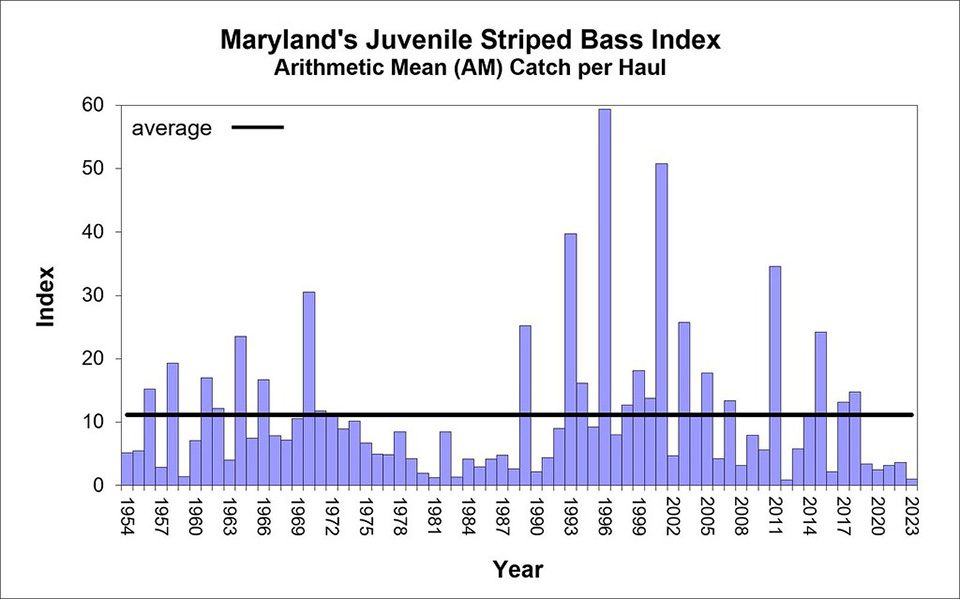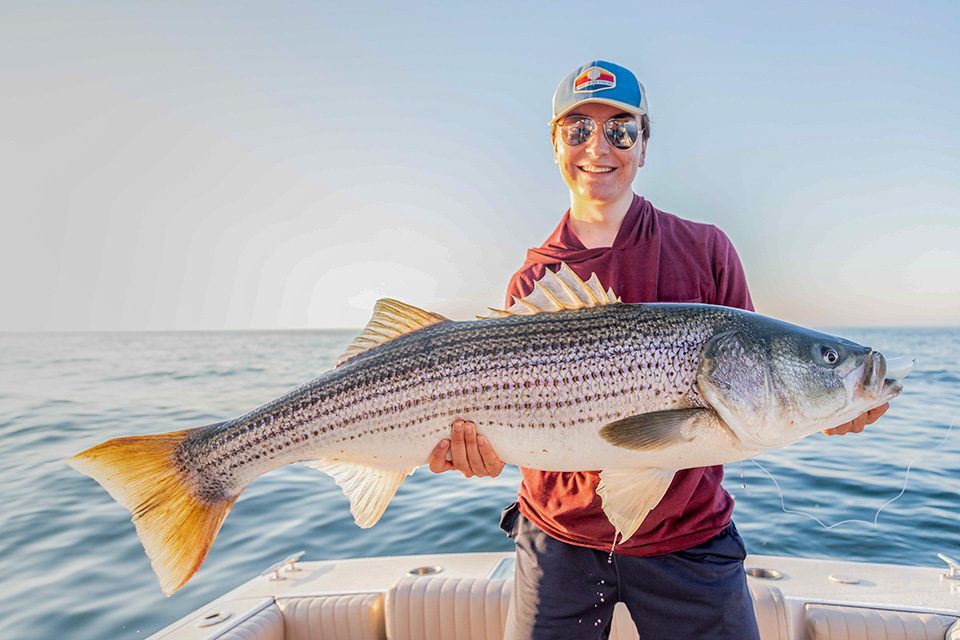It was another bad year for striped bass reproduction in Chesapeake Bay. Maryland released results from its annual juvenile striped bass survey, and the numbers were well below average, continuing a streak of poor reproductive years going back to 2019.
The survey tracks reproductive success of Maryland’s state fish in the Chesapeake Bay. The 2023 young-of-year index is 1.0, well below the long-term average of 11.1.
“The warm, dry conditions in winter and spring during the past several years have not been conducive to the successful reproduction of fish that migrate to fresh water for spawning,” said DNR’s Fisheries and Boating Director Lynn Fegley. “In response, we’re working with the Atlantic States Fisheries Commission to support management actions we can take now to protect striped bass and improve spawning success. The Department is also considering additional state-specific actions to increase protections within Maryland.”
Efforts to rebuild the Atlantic Coast population have been underway for several years and are ongoing. Low levels of spawning stock in recent years have spurred action by the Atlantic States Marine Fisheries Commission, which manages the overall population of striped bass along the Atlantic coast. In May, the commission put in place an emergency measure that bars anglers from harvesting fish larger than 31 inches. In early 2024, the Commission will vote on additional regulation changes aimed at reducing striped bass deaths caused by coastwide fishing activity.
Striped bass spawning activity is temperature driven. Historically, adult fish migrated to the Chesapeake Bay to spawn in April and May, which aligned with the seasonal arrival of zooplankton and other microscopic food sources that larval striped bass eat. However, recent winters have produced less-than-average snowfalls in the region and therefore less snowmelt to cool the rivers and streams where striped bass spawn.
Research shows spring zooplankton in the bay has also been altered by warmer winters. Fishery scientists are investigating whether higher temperatures earlier in the year are affecting the survivability of juvenile striped bass.
Despite the challenges striped bass face, historic spawning data shows the ability of the population to increase quickly under the right environmental conditions. The species can have several years of poor recruitment followed by a productive spawning year that can bolster the overall population long-term.
Other anadromous species with similar spawning behavior such as white perch, yellow perch and herring also experienced below-average reproduction this year.
“It’s important to remember that increasing the size of the striped bass stock does not guarantee strong reproduction,” said Fegley. “We will continue to work with other coastal states to rebuild the population so spawning can succeed when conditions are right.”
Previously, favorable environmental conditions for striped bass such as heavy winter snowfalls or higher spring rainfalls have helped produce stronger juvenile year classes. Nutrient pollution reduction efforts throughout the Bay watershed have also reduced the instances of hypoxia affecting striped bass and other fish.
Biologists captured more than 47,000 fish of 63 different species while conducting this year’s survey. Encouraging results were documented regarding two species lower on the food chain. Menhaden abundance was the highest measured in over 30 years. Bay anchovy abundance was the highest measured since 1974. These species are very important to the ecology of the bay as a food source.
During this annual survey, fishery managers examine 22 sites located in four major striped bass spawning areas: the Choptank, Nanticoke, and Potomac rivers, and the Upper Chesapeake Bay. Biologists visit each site three times per summer, collecting fish with two sweeps of a 100-foot beach seine net. The index represents the average number of recently hatched striped bass captured in each sample.

